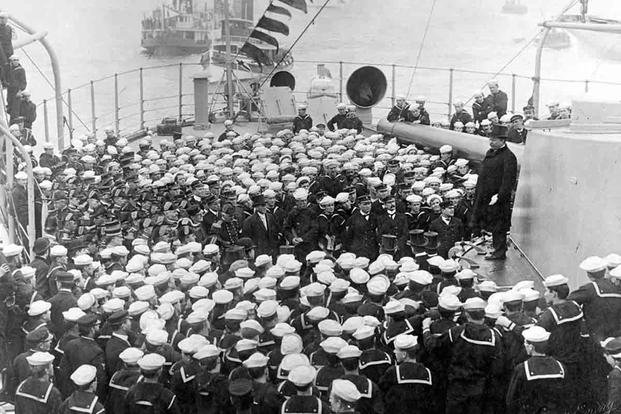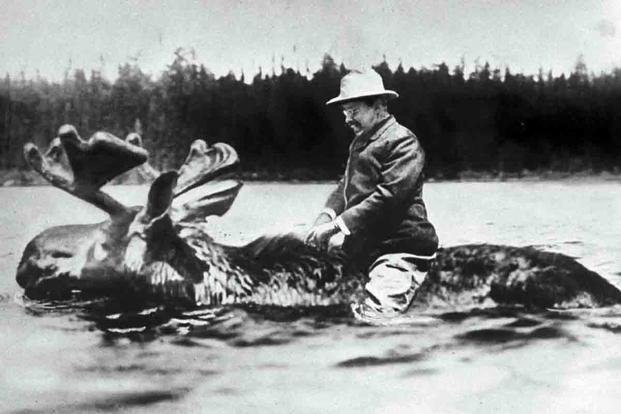There was nothing the U.S. military could do that President Theodore Roosevelt couldn't do better. Actually there was probably no activity anyone could do that Teddy wouldn't try to do better -- and in most cases, he did do it better.
Even when it came to the military, Roosevelt had a pretty good idea of what he was doing. A veteran officer of volunteers during the Spanish-American War (for which he would later be awarded the Medal of Honor), he knew what it took to be effective in combat, and much of it required physical fitness.
Roosevelt was a renowned athlete, fitness buff and lover of all things vigorous, and everyone, even back then, knew it. So it's kind of a mystery why the United States Army and Navy would decide to question or argue with the 26th commander in chief's policies on military fitness -- but they did. Here's how that turned out for them.
1. Roosevelt Instituted the First PT Tests.
Roosevelt first rose to the presidency after the assassination of William McKinley in 1901. During his tenure in office, he noticed that some of the higher-ranking officers in the Army and the Navy seemed too corpulent for their roles as military leaders. Toward the end of his second term, he wrote to Secretary of War Luke E. Wright, asking if he could implement a fitness test.
He even wrote to the Secretary of the Navy Truman Newberry that he was "unpleasantly struck by the lack of physical condition" of naval officers, old and young. He suggested they be held to the fitness standards of the coastal artillery, an Army unit that had been restructured and upgraded during his tenure.

The result was a fitness test for the Army, Navy and Marine Corps that consisted of three areas:
- A 50-mile walk within three consecutive days and in a total of 20 hours;
- A ride on horseback at a distance of 90 miles within three consecutive days; or
- A ride on a bicycle at a distance of 100 miles within three consecutive days.
2. He Led the First Army Fitness Test Run.
Roosevelt, after losing a Muldoon run challenge (a seven-mile jog after an eight-mile walk) to Brig. Gen. J. Franklin Bell, the commandant of the General Staff College at Fort Leavenworth, Kansas, gave a speech with Bell at the school. In the November 1908 address, he told the officers they should be in fit condition at all times, and then invited them to what the president initially referred to as a "stroll."
The president led Bell, Interior Secretary James R. Garfield and 58 other officers through a dense forest at faster than the U.S. Army's double-time pace. Along the way, they crossed deep streams and climbed a steep, 200-foot rock wall. Roosevelt called it a "bully walk" at the end of the day, while the Army brass struggled to move.

3. When They Complained, Roosevelt Took Action.
Unsurprisingly, not everyone in the military was thrilled with the 51-year-old president's fitness standards. The Navy pushed back against the commander in chief, specifically taking exception to the 90-mile ride within three days. On Jan. 13, 1909, the president of the United States set out on a journey to show the Navy it would be OK.

At 3:40 that morning, Roosevelt; military aide Capt. Archibald W. Butt; Adm. P.M. Rixey, the surgeon general of the Navy; and Navy surgeon C.D. Grayson set out from the White House on a ride. Their journey took them to Warrenton, Virginia, where the group ate a meal and then promptly returned to Washington. The entire route was 106 miles long, completed in a third of the time required by the Navy.
-- Blake Stilwell can be reached at blake.stilwell@military.com. He can also be found on Twitter @blakestilwell or on Facebook.
Want to Learn More About Military Life?
Whether you're thinking of joining the military, looking for post-military careers or keeping up with military life and benefits, Military.com has you covered. Subscribe to Military.com to have military news, updates and resources delivered directly to your inbox.
















